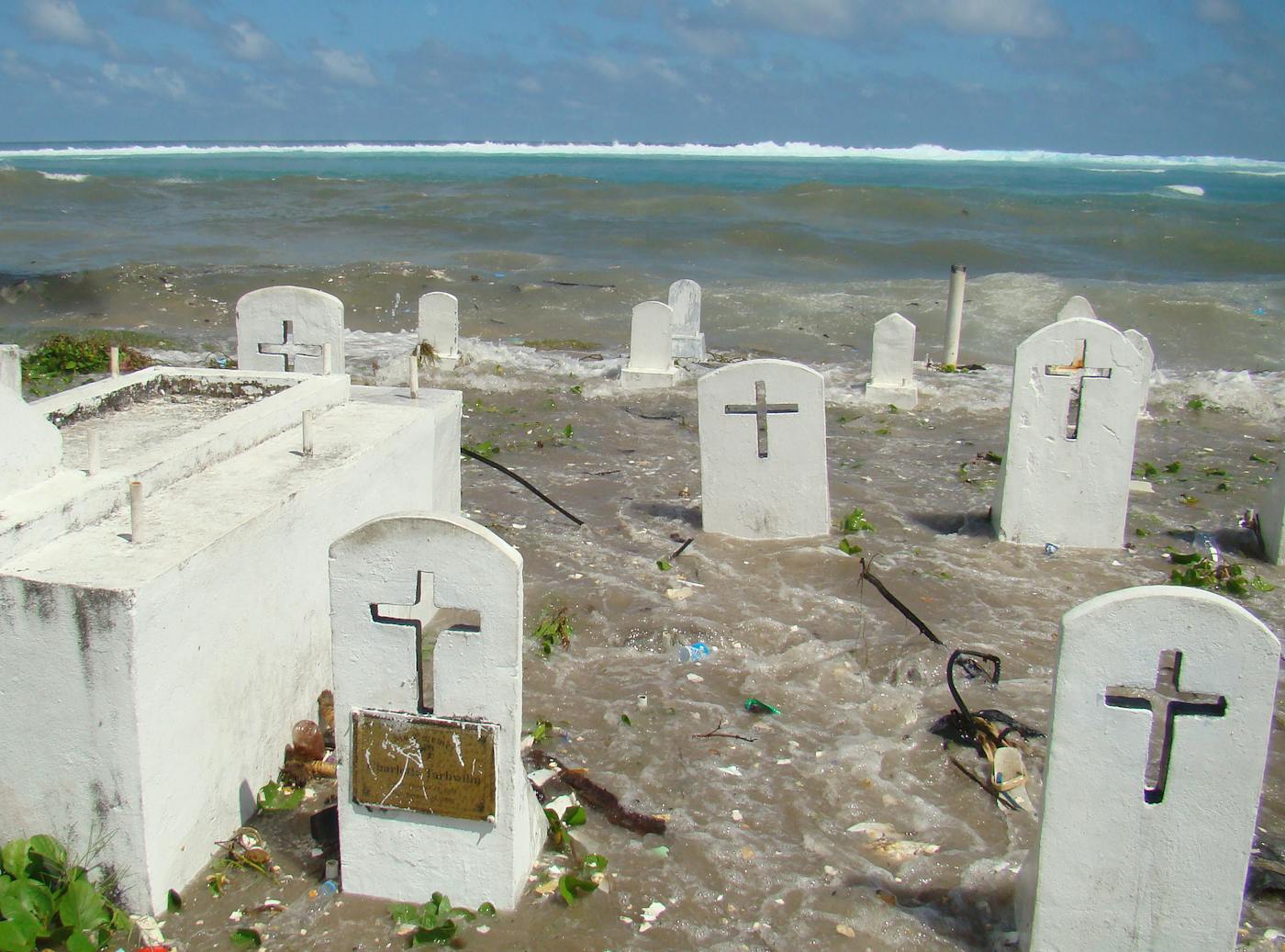Alberta holds one of the world’s most ravaged regions. In the north of the Canadian province, a vast sprawl of industry the size of Florida has been erected to haul tar sands from beneath the forests, desiccating the land in pursuit of profitable oil, which in turn warms the planet and destroys its ecosystems. The Indigenous peoples who live among these gray wastes have a word to describe what has long been happening to them. “If we don’t have land and we don’t have anywhere to carry out our traditional lifestyle,” George Poitras of the Mikisew Cree First Nation told a journalist in 2007, “we lose who we are as a people. So if there’s no land, then it’s equivalent in our estimation to genocide of a people.” Tony de Brum, the revered former leader of the Marshall Islands—a low-lying Pacific atoll once abused as an American nuclear testing lab, where homes are already being washed away by rising waters—also uses this provocative term. The “displacement of populations and destruction of cultural language and tradition,” he said in 2015, “is equivalent in our minds to genocide.”
Scholars and organizers have long warned that as the planet decays, genocides will become more likely. Infrastructure collapse, resource scarcity, and authority vacuums could, they hypothesize, throw entire peoples from the lands of their birth, forced to battle each other to survive. Some governments will draw down the portcullis or build up the border wall—islands of reaction.
But climate change is not just an imminent threat—something about to happen, hanging portentously like a guillotine blade over the horizon. In fact, it is already here; we live amid its damages. And those threatened Indigenous nations raise an important question: Is it possible that climate change is not just a trigger of genocide but also a genocidal force in and of itself? Could this incendiary form of international law really be used as tool against the biggest polluters and destroyers of our homes?
When we think about genocide today, we think of a particular kind of violence—a singular event of incredible destruction carried out by a set of perpetrators against a definable group, such as the Ottoman Empire’s mass deportation of Armenians, Serbian camps for Bosnian Muslims, Hutu pogroms of Tutsi, and perhaps above all, the Nazi murder of millions of Jews. The techniques of obliteration can be crude and fanatical or high-tech and methodical, but they share three criteria: the targeting of particular and distinct victims—a tribal, ethnic, or religious unit; the deliberate and calculated conspiracy to murder, provable in common criminal court as if only one person had killed another; and, more abstractly, a sense that such violence is unique and discrete, not a normal thing to occur.
By this kind of strict legal understanding, it would be a waste of breath and effort to haul the chiefs of Chevron, Aramco, DuPont, Bayer, Nestlé, Tyson, or any of the largest carbon emitters into the dock at the International Criminal Court and charge them with genocide by climate change. For starters, the multitude of ways our ecology has been altered does not create a uniform method of murder. The planet’s crisis comes from more than just carbon accumulation. Rather, in David Wallace-Wells’s evocative term, it is a “cascade”: a rolling compound of ozone depletion, aerosol loading, freshwater exhaustion, phosphorous- and nitrogen-cycle imbalances, general pollution, and so on. As instruments of slaughter, infernos in California and New South Wales have little in common with floods in Miami and Manila, or heatwaves in Karachi and Kirkuk. And even when these forces are at their most devastating, one might object, there is still no specific ethnic, religious, or tribal group suffering on its own—it appears to afflict all nature and all people, albeit not remotely equally.
